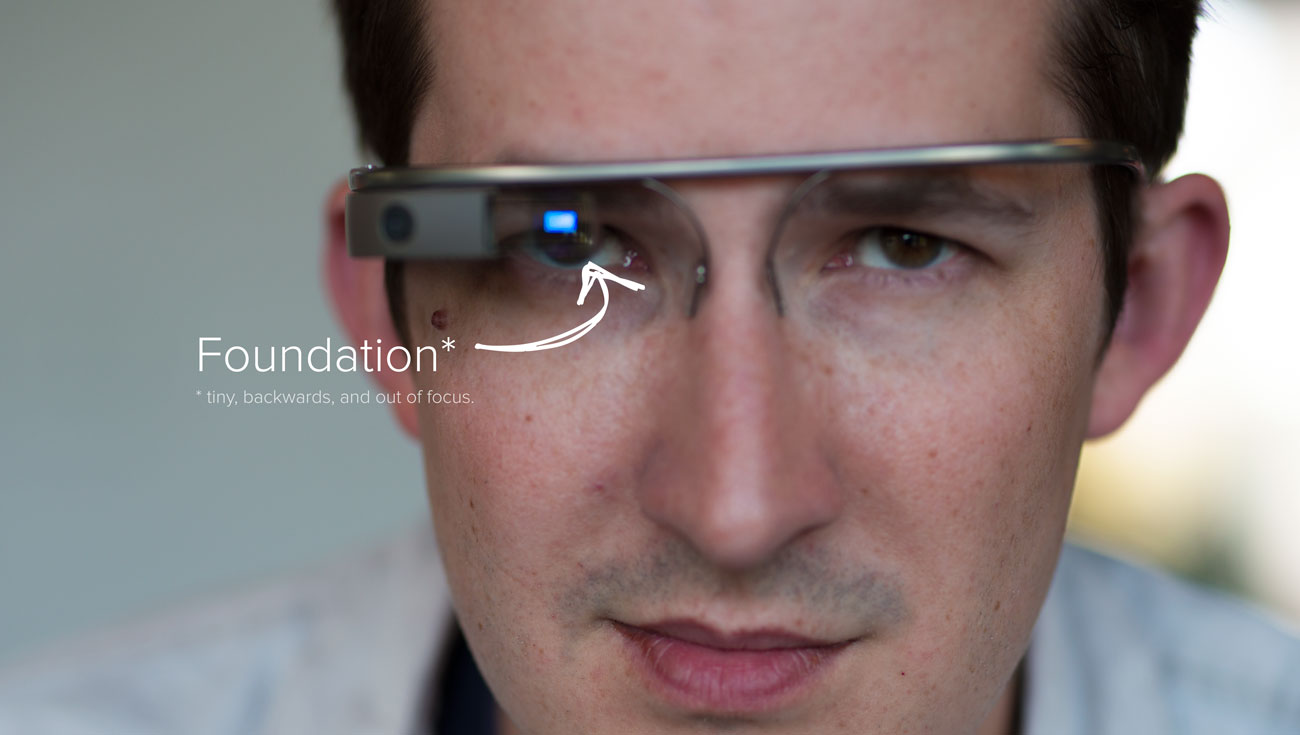
Alright, they make you look more than a little like a cyborg. Wearing them out in person is awkward and makes you weirdly self-conscious. But you can't deny that 'Glass' from Google is fascinating technology. And Foundation works pretty well on it.
We were lucky enough to secure a pair through the #ifihadglass Explorers program, and we've been playing around with them all week. While people have written ad nauseam about the experience of wearing Glass, we had a more specific thing we wanted to play with: exploring the web through them. Amazingly enough, it's not a terrible experience.
Accessing the Web
Almost everything on Glass is voice-cued, so to reach a Website at all you need to tell the device to Google something, for example "Product Design Company in Campbell." After showing you the Google results you can elect to View Website, an action made available in the last Glass update.
Glass does render arbitrary pages, and does a … pretty good job. Performance-wise Glass is about on par with a 2-year-old Android device. Pages render somewhat slowly and anything that requires significant hardware like CSS transitions (with a decent frame rate) is going to suffer quite a bit. That being said it is a modified version of Chrome and it renders pages correctly in most cases.
Using a Page
When it comes to using a page, the controls are intriguing and pretty cleverly done. Using the touchpad on the side of the device you can easily scroll up and down by sliding your finger along it. Sliding along with two fingers zooms in and out (a very choppy affair). Where it gets cool is when you hold down with two fingers and just … look around.
As you move your head, the built-in accelerometer translates your head's movement into both a means of panning around the page, as well as the means of targeting a link to select. A reticle in the center of the screen shows your target, and tapping on the touchpad gives you an option to select and follow the targeted link. It's a crafty way of using a natural action like looking around and mapping it to the Web. It works really well, even if you look like an aimless idiot to anyone watching you.
Foundation + Glass
Once we learned how it worked and what it displayed we were pretty confident Foundation 4 would have no issues on Glass. The pages it shows are presented as mobile screens which makes sense; Glass reports a resolution of 640x360. Foundation 4 being mobile first, pages are rendered as small screen pages using the small device grid.
We found one issue with Clearing which has some trouble with how Glass handles the canvas panning, and of course some things like Joyride can be a bit tedious to pan around and deal with, but by and large Foundation 4 has you covered for Web sites being shown on Glass. We'll do some more testing and verify this but we were pretty happy that our thesis for Foundation, being ready for devices that don't exist yet, is holding up. Foundation 4 was ready for Glass. Pretty neat.